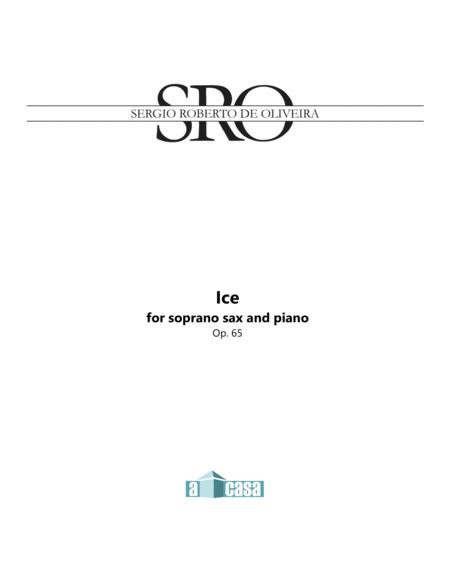Instrumental Duet Instrumental Duet,Piano,Soprano Saxophone - Digital Download SKU: A0.962349 Composed by Sergio Roberto de Oliveira. 20th Century,Contemporary,World. Score and parts. 19 pages. Sergio Roberto de Oliveira #4809897. Published by Sergio Roberto de Oliveira (A0.962349). Falls House Press has published his works Faces and Mot pour Laura in the United States. Various articles in specialized journals and sites have cited the composer, such as the Flutist Quarterly (Circus Brasilis - The flute music of Sergio Roberto de Oliveira), Early Music America (Something New for Early Music), Andante.com (The heirs of Villa-Lobos), 21st Century Music, Musicabrasileira.org, etc. Sergio Roberto de Oliveira has frequently been invited to lecture at American universities, and has spoken at more than a dozen institutions including Princeton and Duke. In 2009 he was Artist-in-Residence at Duke University. In addition the USA and the UK, Oliveira's music has also been played in many countries, with invitations for concerts exclusively with his music in México, Italy and Holland (Amsterdam). The Spanish Magazine Sonograma has published 2 interviews with Sergio.Sergio is the founder and a member of the group of composers Prelúdio 21. The group is one of the most active worldwide. It holds a distinguished place in Brazilian contemporary music, having been active for 15 consecutive seasons, with a permanent series of monthly concerts since 2008. In 2011 the group released the CD String Quartets, with performances by the Quarteto Radamés Gnattali. Oliveira is also a member of the group of composers Vox Novus, based in New York.To commemorate 15 years of activity as a composer, Oliveira released a box set with 4 CDs, as well as a CD with composer Mark Hagerty, and produced the series QUINZE, with 13 concerts including his works, between July and October of 2012. More than 130 musicians, including 28 composers, participated of QUINZE (CDs and series).His discography includes 14 CDs as producer, 14 as composer, 22 as general producer, 2 as arranger and 2 as pianist. His catalog of compositions includes approximately 115 works for various ensembles, including Symphony Orchestra. Sergio Roberto de Oliveira is a member of the Latin Academy of the Arts and Science of Recording.He died from pancreatic cancer in 2017.
